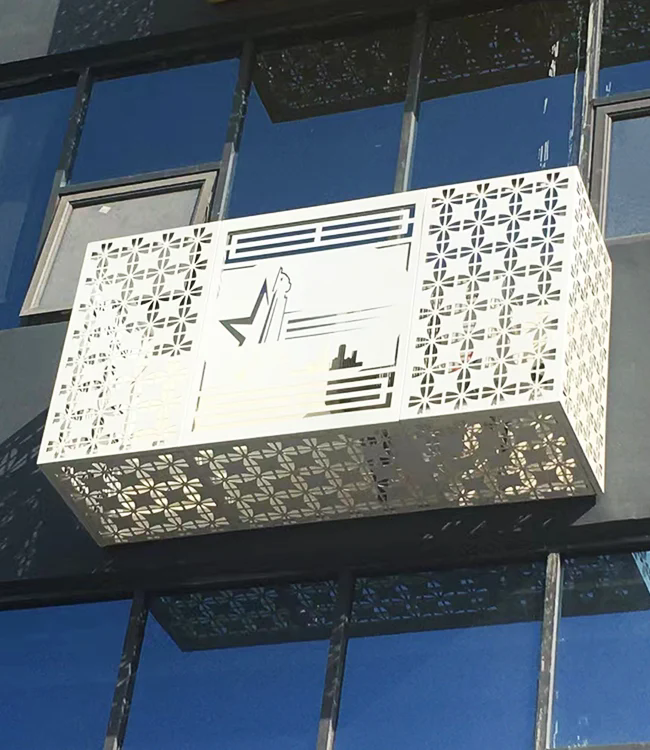What Are the Advantages of Aluminum Facades in Modern Architecture?
2025-11-04
Aluminum facades have emerged as a leading choice for modern construction, offering an elegant combination of durability, aesthetic appeal, and functional performance. As urban architecture continues to evolve, these facades provide solutions that go beyond traditional materials like glass, stone, or wood. Aluminum’s lightweight structure, corrosion resistance, and flexibility in design allow architects to create innovative building exteriors while ensuring long-term reliability.
Why Are Aluminum Facades Preferred Over Traditional Materials?
Aluminum facades are increasingly preferred due to several compelling reasons, from sustainability to low maintenance. Compared to traditional cladding materials, aluminum offers unique characteristics that make it suitable for both commercial and residential applications.
Key Advantages Include:
-
Lightweight yet strong: Aluminum reduces structural load while maintaining high strength.
-
Corrosion resistance: Protective coatings make it ideal for coastal and humid climates.
-
Design flexibility: Available in multiple finishes, colors, and patterns for modern architectural aesthetics.
-
Energy efficiency: When paired with insulated panels, aluminum facades can improve thermal performance.
-
Low maintenance: Resistant to rust, fading, and environmental degradation, reducing long-term costs.
Aluminum facades also provide noise reduction benefits and can be customized to integrate seamlessly with glass, steel, or other exterior elements. The material’s sustainability further enhances its appeal, as aluminum can be recycled without losing structural properties.
Technical Parameters of Aluminum Facades:
| Parameter | Specification / Details |
|---|---|
| Material Grade | 1100, 3003, 5005 series aluminum alloys |
| Panel Thickness | 2mm–6mm |
| Width Range | 300mm–1500mm |
| Surface Finish | Powder coating, anodized, PVDF coating |
| Fire Resistance | Class A (non-combustible) |
| Weight | 7–9 kg/m² (depending on thickness) |
| Thermal Conductivity | 205 W/m·K |
| Durability | 20+ years under normal conditions |
| Installation Method | Clip-in system, screw-mounted system, or adhesive bonding |
| Environmental Compliance | REACH, RoHS certified |
The table illustrates the detailed technical parameters that ensure aluminum facades meet both aesthetic and functional expectations. These standards make it easier for architects and builders to select the right type of facade for various environmental conditions and structural requirements.
How Do Aluminum Facades Function and Enhance Building Performance?
Aluminum facades perform multiple roles beyond mere aesthetics. They act as protective barriers, enhance energy efficiency, and improve overall building longevity. Understanding how these facades work helps explain their increasing adoption in contemporary architecture.
-
Weather Protection: Aluminum panels shield the underlying structure from rain, wind, UV radiation, and temperature fluctuations. Coatings like PVDF or anodized layers prevent oxidation and color fading.
-
Thermal and Acoustic Insulation: By integrating insulation layers or composite panels, aluminum facades contribute to maintaining internal temperatures and reducing noise penetration. This makes buildings more energy-efficient and comfortable for occupants.
-
Structural Integration: The lightweight property of aluminum allows for easier installation and reduces load on primary building frameworks. This provides flexibility in both retrofit projects and new construction.
-
Aesthetic Versatility: Aluminum facades can mimic wood, stone, or metallic finishes, offering a wide design palette. Creative use of perforations, patterns, or 3D shapes enhances architectural appeal.
-
Sustainability and Longevity: Aluminum is fully recyclable and retains properties over multiple cycles, aligning with green building standards and reducing environmental impact.
Common Applications of Aluminum Facades:
-
Commercial office buildings
-
Retail stores and shopping malls
-
Airports and transportation hubs
-
Residential high-rises and luxury villas
-
Cultural centers and museums
By combining functional performance with visual sophistication, aluminum facades meet both regulatory standards and the creative demands of contemporary architecture.
What Are the Future Trends of Aluminum Facades in the Construction Industry?
The evolution of aluminum facades is closely tied to advancements in materials science, sustainability demands, and smart building technologies. Key trends shaping the future include:
-
Smart Facade Integration: Incorporating photovoltaic panels, LED displays, or adaptive shading systems into aluminum facades is becoming increasingly popular. This allows buildings to generate energy or adjust lighting in response to environmental conditions.
-
Sustainable Manufacturing Practices: Use of recycled aluminum, low-VOC coatings, and eco-friendly production methods aligns with global sustainability goals and green certifications such as LEED and BREEAM.
-
High-Performance Coatings: Future coatings will improve resistance to graffiti, pollutants, and extreme weather, ensuring long-lasting visual appeal.
-
Modular and Prefabricated Systems: Faster installation with minimal waste supports cost-effective construction without compromising quality.
-
Hybrid Materials: Combining aluminum with advanced composites, glass, or carbon fiber enhances mechanical performance and design freedom.
-
Customization through Digital Fabrication: CNC machining, 3D printing, and parametric design tools enable unique facade geometries previously unachievable with traditional methods.
Common Questions About Aluminum Facades:
-
Q1: How durable are aluminum facades under harsh weather conditions?
A1: Aluminum facades are highly durable due to their corrosion-resistant properties and protective coatings. They can withstand rain, wind, and UV exposure for over 20 years with minimal maintenance. In coastal areas, anodized or PVDF coatings further protect against salt corrosion. -
Q2: Can aluminum facades contribute to energy efficiency?
A2: Yes, aluminum facades, especially when combined with insulated panels or reflective coatings, significantly improve thermal performance. They reduce heat transfer, lower cooling/heating demands, and can integrate with energy-efficient glazing systems to enhance building sustainability.
In conclusion, aluminum facades offer a compelling combination of aesthetic versatility, functional performance, and sustainable advantages. Their lightweight nature, resistance to corrosion, and adaptability to modern design trends make them an ideal choice for architects, developers, and urban planners seeking long-lasting, visually striking building exteriors.
For projects seeking high-quality aluminum facades that balance innovation, durability, and environmental responsibility, Nante provides expert solutions tailored to various architectural needs. Contact us to learn more about our aluminum facade offerings and to explore how they can transform your building projects.



